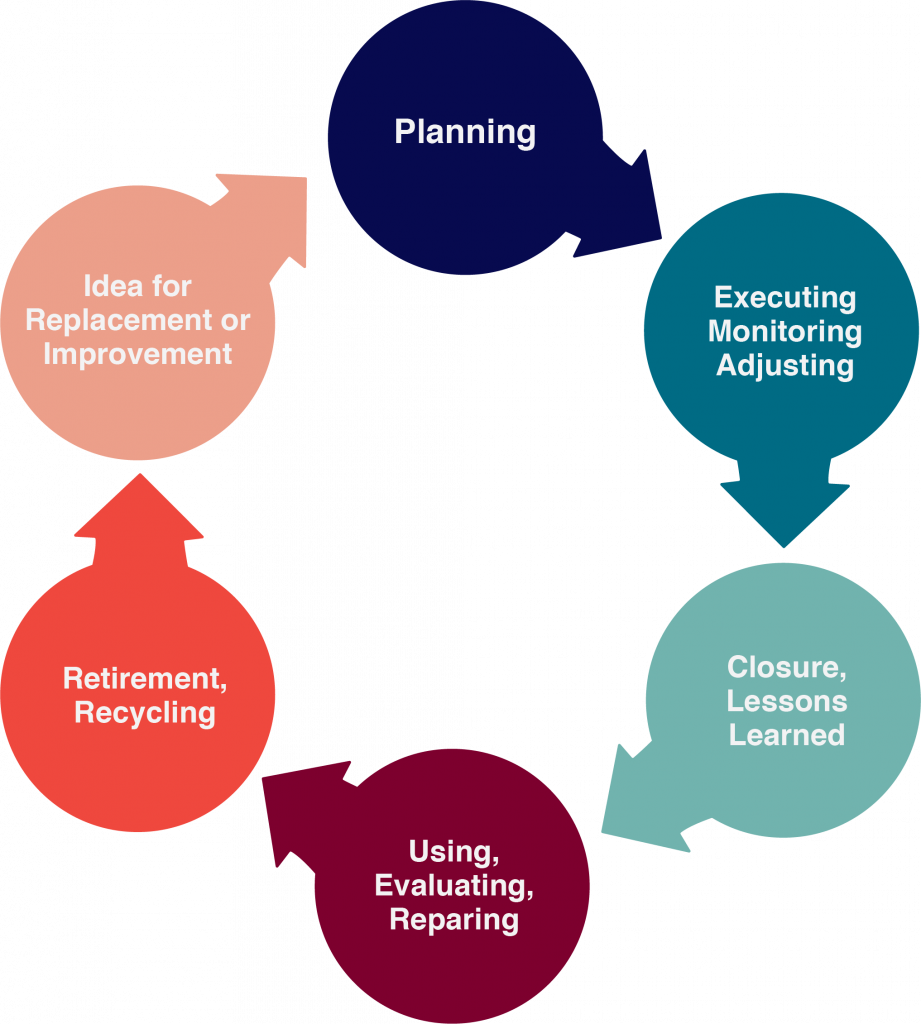Chapter 9 – Project Closure and Evaluation
9.5. Reporting and Lessons Learned
The Final Report provides a final summary of the project performance. The main goal is to improve on future projects. The report captures any changes and lessons learned from the finished project.
It could include the following:
- Summary of the project and deliverables
- Data on performance related to schedule, cost, and quality
- Summary of the final product, service, or project and how it supports the organization’s business goals
- Risks encountered and how they were mitigated
- Recommendations
- Lessons learned
- Appendix
Exactly where your work falls in the project’s life cycle depends on your perspective as to what constitutes “the project” in the first place. The designers and constructors of a building might consider the acceptance of the building by the owner as project closure. However, the results of the project—that is, the building—lives on. Another contractor might be hired later to modify the building or one of its systems, thus starting a new project limited to that work.
If project closure is done thoughtfully and systematically, it can help ensure a smooth transition to the next stage of the project’s life cycle, or to subsequent related projects. A well-done project closure can also generate useful lessons learned that can have far-reaching ramifications for future projects and business sustainability. The closeout information at the end of a project should always form the basis of initial planning for any future, similar projects.
Although most project managers spend time and resources on planning for project start-up, they tend to neglect the proper planning required for project closure. The Lessons Learned from prior projects is important to be reviewed at the beginning of the next project, not when something goes wrong. This is a reason for involvement of Human Resources to deliberately ensure data is collected with specific information to be included in the Final Report, including the Lessons Learned. Ideally, project closure includes documentation of results, transferring responsibility, reassignment of personnel and other resources, closing out work orders, preparing for financial payments, and evaluating customer satisfaction. Of course, less complicated projects will require a less complicated close-out procedure. As with project audits, the smooth unfolding of the project closure phase depends to a great degree on the manager’s ability to handle personnel issues thoughtfully and sensitively. In large, on-going projects, the team may conduct phase closures at the end of significant phases in addition to a culminating project closure.
Project closure is traditionally considered the final phase of a project. It includes tasks such as
- Transferring deliverables to the customer
- Cancelling supplier contracts
- Reassigning staff, equipment, and other resources
- Finalizing project documentation by adding an analysis summarizing the project’s ups and downs
- Making the documentation accessible to other people in your organization as a reference for future projects
- Holding a close-out meeting/lessons learned
- Celebrating the completed project

HR in Focus: HR and Lessons Learned
The Close-Out Workshop or Lessons Learned Workshop is an opportunity to end a project the way you started it—by getting the team together. Human Resources would be involved to assist in designing the meeting and facilitating the meeting. It is important that this meeting be not seen as recommendations, rather a time to ponder the project by looking back from the beginning to the end. During this important event, the team should review what went well, what didn’t go well, and identify areas for improvement. All of this should be summarized in the final close-out report. This is a time of reflection for the team and other stakeholders. The team/stakeholders want to capture the successes over the entire life cycle of the project (selection, planning, execution, closure). The Human Resources Specialist would guide the team/stakeholders through a process that described what happened in the project, how each event impacted the project, and what might have happened differently to improve the project. This is essential information for future projects to clone successes and avoid mistakes.
A final close-out meeting with the customer is also essential. This allows the organization to formally complete the project and lay the groundwork for potential future work. The customer may be included in the stakeholder/team workshop, or another workshop is held with the Project Manager, major stakeholders and the customer. Attendance at these workshops would be determined prior to the workshops by the Human Resources Specialist and the Project Manager.
As new projects are beginning, it is important that the Lessons Learned be reviewed prior to the project start date. While the new project is being planned, the Lessons Learned can easily be review, and integrated into the new project goals.

